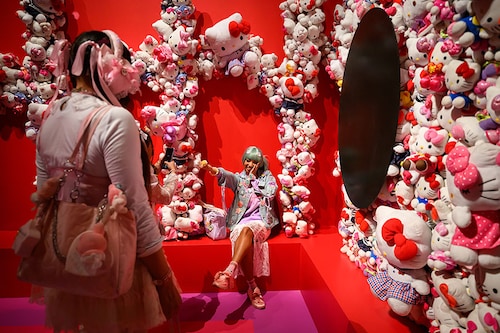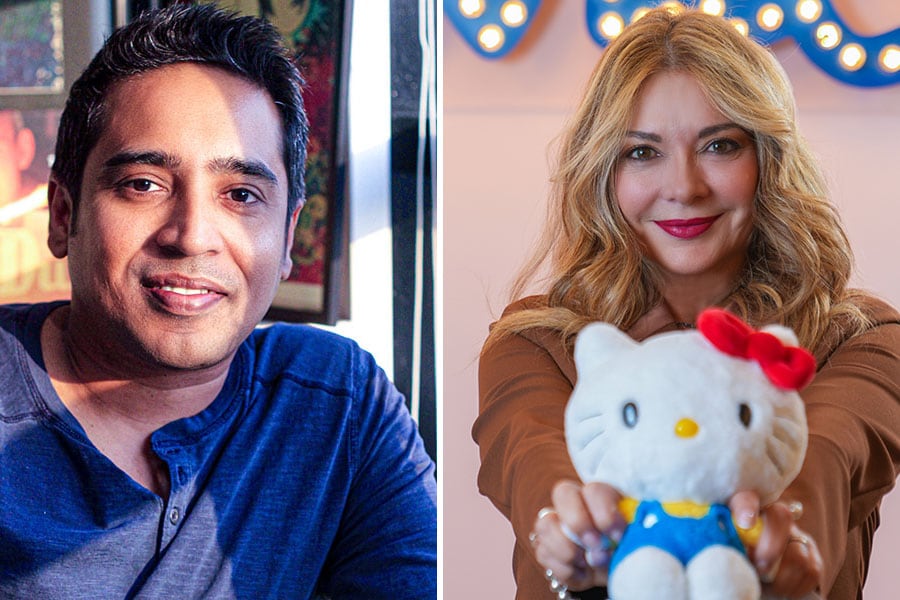Japanese pop culture icon Hello Kitty set to enter India
Hello Kitty's parent company, Sanrio, has appointed Dream Theatre as their licensing agency in India and will launch content, products, and cafes based on the character from this year


Hello Kitty, a beloved pop culture icon that has captured the attention of children and adults, is not only turning 50 this year but also making its debut in India. Widely recognised as a white, female cartoon character with a red bow on her head, she was created to promote friendship, kindness, and inclusivity. Over the years, she has become a brand ambassador of the Kawaii culture, which in Japanese pop culture refers to the quality of being cute and endearing.
Sanrio, its parent company and owner of the intellectual property (IP), has appointed Dream Theatre as their licensing agency in India that represents other cartoon characters such as Pokemon, Ninja Hattori, and Little Singham. Currently, with Hello Kitty’s presence in 130 countries, and a global valuation of $3.8 billion as of 2022, Sanrio plans to introduce content, products, and cafes based on Hello Kitty in India.
Forbes India spoke to Silvia Figini, chief operating officer, Sanrio GmbH (EMEA, Oceania and India) and Mister Men Limited (worldwide), and Jiggy George, founder of Dream Theatre, about the collaboration.
Edited excerpts:
Q. What makes India an important market for Hello Kitty? Why did it take 50 years to enter India?
Silvia Figini (SF): Hello Kitty and Friends, as we call it, has been successful all around the world. The brand was born in Japan and spread very fast. Hello Kitty is now known as the brand ambassador of the Kawaii culture, which has also made its entry into India. In many ways, Hello Kitty is also connected to the manga world, which is another important ongoing trend, even in India. Looking at Kawaii culture’s big success, we thought it was the right time to penetrate a new market like India that has huge potential. We were waiting for the right time, the right investment to make the brand relevant with the right culture, and the right elements, to make it consistent with the Indian culture.
Q. What kind of potential do you see for Hello Kitty in India?
Jiggy George (JG): It"s a unique brand. I see many opportunities with Hello Kitty in India. First, is the brand perspective. The beauty of the brand is that it is always recognised. Second, it has a very unique positioning for Kawaii, a movement that started in the 1970s and isn"t restricted to any particular category. You see kawaii in food, architecture, make-up, cosmetics, and various other categories, so it gives us plenty of categories to play with. And third, Sanrio, which started as a brand for girls, now transcends age. Even though we focus on Gen Z, from a fashion perspective, it is liked by infants, kids, and young adults. A broad spectrum like this is the uniqueness of the brand.
 (L-R) Jiggy George, founder, Dream Theatre Silvia Figini, chief operating officer, Sanrio GmbH (EMEA, Oceania and India) and Mister Men Limited (worldwide)
(L-R) Jiggy George, founder, Dream Theatre Silvia Figini, chief operating officer, Sanrio GmbH (EMEA, Oceania and India) and Mister Men Limited (worldwide)
Q. What investments is Sanrio planning to make to establish Hello Kitty in India?
SF: We are set to have a very strong content proposition for India because the brand is recognisable here, but we want to give fresh content to reach all target audiences. We also need to be present on all platforms that are relevant for each target. Another important investment for us will be to create a strong collaboration with Indian retailers and local licensees to get maximum visibility. India is a diverse market, so penetration is going to be complex. But, we don"t have any limitations, we are going to go step-by-step, we are testing, and we are understanding the best way to communicate the values of kindness, friendship, and positivity that Hello Kitty stands for.
Speaking of investments, we are starting a YouTube channel in Hindi in the second half of the year, while our English channel will also be promoted. In 2025, we will open a channel in Tamil and Telugu. Our Instagram account, Hello Kitty India, will be ready next month. We have many plans for Hello Kitty’s 50th birthday, with events, which will be planned for India too.
Q. Are there any specific markets within India you’re targeting?
SF: Using our digital platforms, we plan to launch pan-India. With retail, the goal is to focus on medium to high-end retailers because that is the natural positioning of the brand around the rest of the world. Usually, we collaborate with high-end brands such as Nike, Balenciaga, Chloe, and Crocs, which helps the brand spread among other retailers and licensees. The idea is to have the same approach in India and once the reach is good, we will take it deeper.
Q. What kind of products can Indian consumers expect from Hello Kitty? Do you plan to integrate local culture and preferences into the products?
SF: In terms of categories, we plan to offer all products including traditional merchandising categories, toys, apparel, back-to-school, and more. We are also big in the entertainment industry. We will have a lot of dedicated content, offered with an Indian flavour. We will have restaurants, cafes, and family entertainment centres to promote Hello Kitty"s message of friendship. The character and its personality will not change, but you might get more colours and more flavours suited for the Indian market.
Q. Which retail chains or e-commerce platforms will be your key partners?
JG: Our primary objective is to make Hello Kitty a fashion and lifestyle icon in India as it is globally. Our focus will be on organised trade to start with, such as joining hands with big retailers such as Reliance, Aditya Birla Group, Souled Store, and Bonkers, to name a few. Right now, at the launch phase, both digital and retail will be given equal importance.
Q. What are the primary challenges you foresee in establishing Hello Kitty in India and how do you plan to address them?
JG: One of the major challenges is licensing because it is an unorganised market and organised retail is just about growing. We are excited to get started during this time of growth. Fake or pirated products are a challenge as well, but we also see it as a form of flattery because it means the brand is still relevant. But we believe when we launch high-quality products at price points comfortable for consumers, people will end up choosing the real thing.
SF: One of our long-term goals with Hello Kitty is to reach the Indian market with the same level of awareness and success as we have seen globally. The challenge is that the Indian market is big, and changes from the north to the south. In two years, our goal is to be one of the most relevant brands in the marketplace. We will do our maximum investment to make this happen. We would like to maintain our identity as a brand that is embraced by children and families. As for pirated products, IP owners are taking action across the world to protect our brand and the activities of our licensees, and necessary action will be taken.
First Published: May 28, 2024, 16:18
Subscribe Now